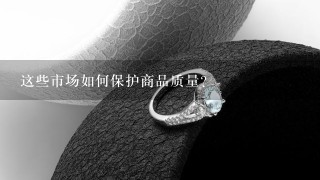这些市场如何保护商品质量?

Answer:
1. Inspection and Testing:
- Manufacturers conduct inspections and tests on raw materials, components, and finished goods to ensure they meet quality standards.
- They use quality control procedures, such as sampling, to verify the product's compliance with specifications.
2. Traceability System:
- Manufacturers establish a traceability system to track the origin and movement of materials and products throughout the supply chain.
- This helps identify any potential sources of defects or irregularities.
3. Certification and Accreditation:
- Many industries require manufacturers to obtain certifications and accreditation from recognized bodies.
- These certifications demonstrate compliance with specific quality standards and safety regulations.
4. Labeling and Packaging:
- Products are often labeled with clear and accurate information, including ingredients, safety warnings, and manufacturing dates.
- Packaging also plays a role in protecting the product and ensuring it is handled properly.
5. Consumer Feedback and Complaints:
- Manufacturers actively monitor consumer feedback and complaints to identify any issues with product quality.
- They use this information to make necessary improvements and address customer concerns.
6. Quality Control Measures:
- Manufacturers implement various quality control measures throughout the production process, such as visual inspection, physical testing, and chemical analysis.
- These measures help identify and prevent defects at an early stage.
7. Continuous Improvement:
- Manufacturers are committed to continuous improvement in quality.
- They regularly review and update their quality control procedures to stay abreast of industry best practices and evolving customer expectations.
8. Regulatory Compliance:
- Manufacturers comply with relevant industry regulations and standards, such as ISO 9001 for quality management systems and FDA regulations for food safety.
- These regulations ensure the safety and quality of products.



































































